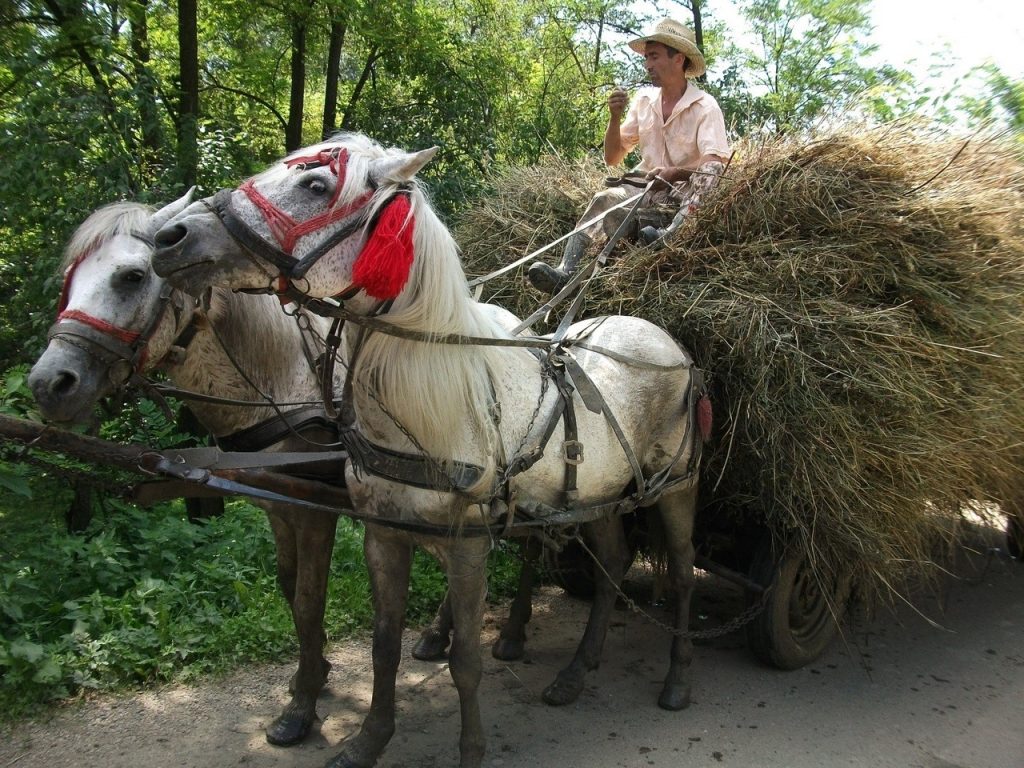InTrans / Oct 20, 2017
Yeehaw for horsepower
Go! Magazine
 posted on October 20, 2017
posted on October 20, 2017
There wasn’t always a bus to take, plane to catch, or car to drive. Transportation has evolved, adapted, and changed over time.
Some of the finest transportation vehicles and systems of today evolved from the models of old. For example, trains today traveling at a top speed of over 200 miles per hour (mph) are adapted from the steam-powered trains of the late 19th century.
But those steam-powered engines that seem antique to us now are a relatively “new” model of transportation when you consider the extensive history of humans and transportation. Our ancestors were “on the move” thousands of years before the first engine or motor. They had other ways of getting around and achieved countless feats in transportation before the engine was even imagined.
Domesticating the horse
Before horsepower, there was “horse”power, which really was the same thing.
One of the biggest advancements in human transportation was domesticating the horse. When humans figured out they could use “pack animals” like horses and donkey for transportation, it changed how we moved forever. Domesticating the horse is said to be one of the biggest turning points in the history of transportation.
In order to be an effective tool, horses and donkeys first had to be domesticated. In doing that, their characteristics and genetic makeup changed, thus becoming the animals we recognize today. Wild did mean wild, and back then, early peoples had to start from scratch.

Though it was previously believed that horses were domesticated in Mesopotamia, in recent years, scholars have confirmed that those who inhabited the Eurasian Steppes were the first people to actually tame the wild horse (Equus ferus ferus) approximately 4000 to 6000 years ago. However, they know very little about how, when, or where they first began to interact with them.
The evolution of the horse
Horses first appeared in cave paintings as early as 30,000 years ago.
That said, these Paleolithic cultures probably hunted them for meat. The earliest known archaeological evidence that signifies the horses’ transition “from prey to pet” dates back to 3500 BCE, and was discovered in Kazakhstan, in Central Asia, at a site associated with the prehistoric Botai culture.

These Botai people, or some other inhabitants of the Eurasian Steppes, were the first to tame wild horses, and the theory implies that this happened in a similar manner to other modern livestock like cattle, sheep, and goats. DNA evidence suggests all horses descended from a small group of ancestors tamed in just a few places.
Horses in society
Horses have the ability to move farther and more quickly than humans, so when humans discovered they could ride horseback, it changed transportation forever. Horses not only made an impact on transportation, but also communication, agriculture, and warfare.
On horseback, humans could travel more effectively. These amazing animals could carry more weight than humans or dogs. So, man’s ability to move was “improved out of all recognition.” The next advancement in human transportation wouldn’t come again for another 5000 years, with the invention of the steam locomotive.
References
www.history.com/news/horse-domestication-happened-across-eurasia-study-shows
Related links
(Video) Przewalski Wild Horse: www.youtube.com/watch?v=xmHIFo09DPM
By Hannah Postlethwait, Go! Staff Writer